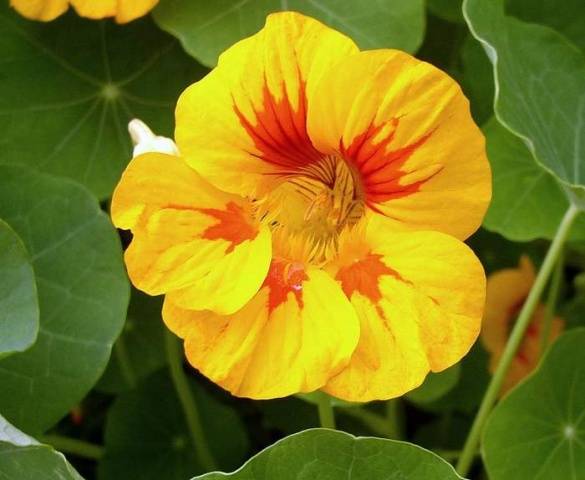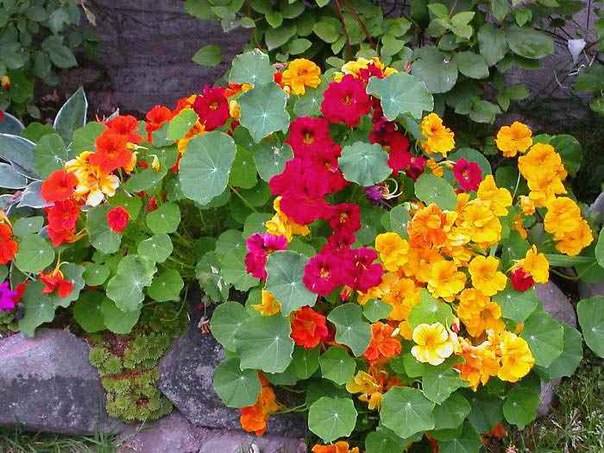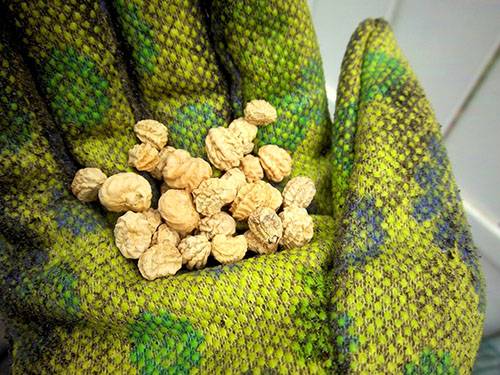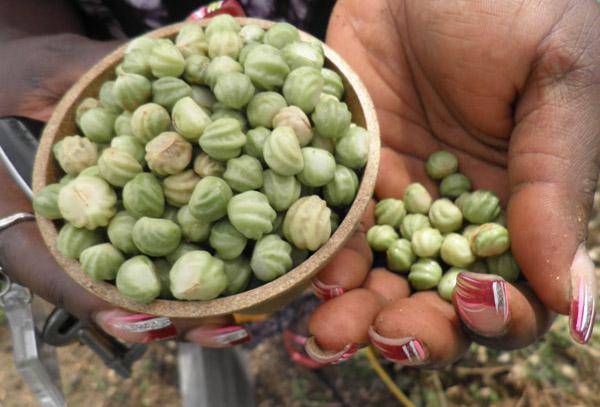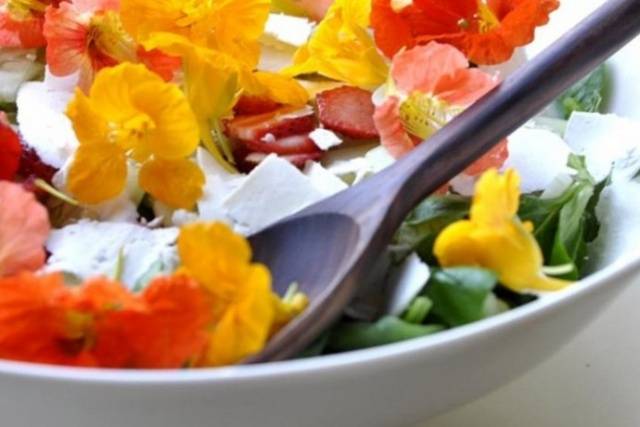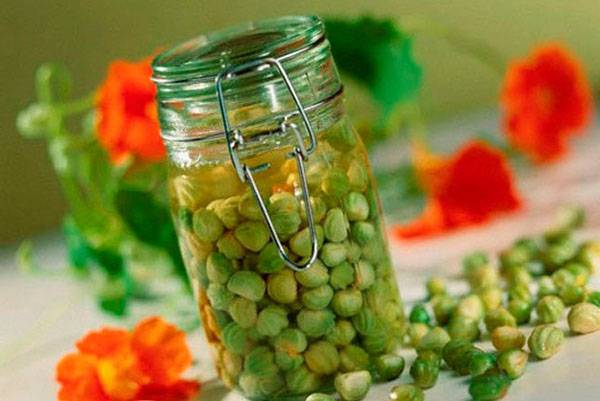Content
The magnificent nasturtium adorns many flower beds, gardens and parks. Its vines, abundantly entwined with bright flowers, are excellent for vertical landscaping and continuous soil cover. Low-growing plants are often used to create flowering borders. Annual and perennial varieties of this crop are propagated by seeds, which have some medicinal properties and can be used as a medicine or food additive. Next, in the section, we'll talk about how to collect nasturtium seeds and how to properly store or use the collected material.
A brief botanical description of nasturtium
Nasturtium arrived in our latitudes from South America. Due to its unpretentiousness and resistance to low temperatures, the plant has successfully taken root in Russia, and is popular with domestic gardeners.
A huge number of varieties of this culture allows you to choose the best option for decorating your garden. So, low-growing plants have a height of no more than 30 cm, while climbing nasturtiums can form vines up to 3 m long. Leaves and stems of nasturtium are fleshy, bright green. Flowers can be painted in pale cream, orange, yellow, red and their shades. The diameter of the flowers can reach 5 cm. The flowering period is long, which is an important advantage of the culture. As a result of flowering, nasturtium forms fruits - small nuts, which are seeds. They are used for plant propagation, preparation of medicines and food.
When and how to collect seeds
The beautiful nasturtium blooms actively for 30-40 days. At the end of flowering, bolls of corrugated, intricate shape are formed on the plants. Each of them consists of three equal parts, which are seeds. Ripe bolls change from green to crimson or brown. Such a color change indicates the maturity of the seeds and is the reason for collecting planting material for the next year.
Harvesting ripe seeds is easy enough. Do this at the moment when the boxes begin to dry out. In this case, it is enough just to substitute your palm and shake the nasturtium stalk slightly. Small seeds-nuts will fall on the palm of their own accord.
If it is not possible to regularly monitor the process of seed ripening, then you can collect the grains as follows: spread a sheet of white paper or a piece of light cloth on the ground under the root of the plant. As the plants wilt, they will begin to bend over the leaf and drop seeds onto it. The gardener will only need to collect the crumbling grains together.
If it was not possible to collect the seeds of nasturtium in a timely manner, and they spontaneously crumbled, then you can pick them up from the ground. Otherwise, next year it will be possible to see a large number of plants that have been sown on their own.
The above options for how to properly collect nasturtium seeds are only suitable if the fall is dry and timely. Rainy weather or the onset of early frosts can significantly spoil the grain and make it unsuitable for sowing the next year. In this case, it is recommended to collect unripe nasturtium seeds by forcibly tearing them off carefully from the stem. Insufficiently ripe grains ripen at home, scattering them in a thin layer on a piece of paper.The planting material is dried for 1-1.5 months with periodic stirring.
Proper harvesting of grains at home allows you to get only high-quality planting material of already proven varieties, as well as save money on buying seeds in the future.
Storage of planting material
You can store nasturtium seeds collected by yourself for a long time. So, carefully dried grains can maintain their quality and germination for 2-3 years. However, for this it is necessary to provide certain humidity and temperature conditions:
- air humidity should not exceed 70%;
- the optimal storage temperature should be + 18- + 220FROM.
So, after drying, the nasturtium grains are collected in a cardboard box or paper bag. Store them in a dry place without access to sunlight.
In addition, the recommendations for collecting seeds and their storage can be found in the video:
Useful properties of seeds
Nasturtium seeds have a number of unique properties. They include a rich vitamin and microelement complex:
- becoming nasturtium includes amino acids, carotene, ascorbic acid;
- grains have antifungal and antibacterial properties;
- the seeds are used as a coughing agent.
Fresh, not fully ripe nasturtium grains are especially rich in vitamins. So, green nuts are harvested by forcibly tearing them off the stem, and used fresh for cooking, pickled. Dry grains of nasturtium retain their beneficial properties throughout the year.
It should be noted that the taste of the grains is quite acceptable, slightly reminiscent of capers. It combines pungency and spice, so fresh grains can be safely added to a salad, and pickled nuts will be a wonderful and very original appetizer. Dried seeds can act as a spice seasoning.
By using nasturtium in cooking, you can provide yourself and your family with a natural and tasty source of vitamins. That is why, having collected the required number of seeds for sowing next year, you should not neglect the remaining seeds.
Pickling recipe
Pickled nasturtium kernels are often referred to as homemade capers. They can be prepared quite simply. This requires:
- Wash 100 g of green seeds under running water and pour into a jar.
- Prepare a wine vinegar marinade. In 200 ml of vinegar add 15 g of salt, a few peas of black pepper and a bay leaf.
- Boil the marinade over a fire and pour over the nasturtium grains in a jar.
- Within 3 months the seeds will be ready for consumption.
In addition to the proposed recipe, there are other options for preparing this tasty and original winter preparation. One of them is shown in the video:
Conclusion
Thus, nasturtium is not only a beautiful, blooming garden decoration, but a useful product, a medicine. Depending on the purpose of the seed, the grower must decide when to harvest the nasturtium seed. So, for sowing grain for next year, it is necessary to ripen qualitatively, whether in a garden bed or in room conditions. For consumption, it is preferable to use fresh, still green grains, which must be harvested before full ripeness. Collecting seeds correctly and storing them properly will preserve the crop for breeding next year and be used as a flavoring ingredient in many culinary dishes.
